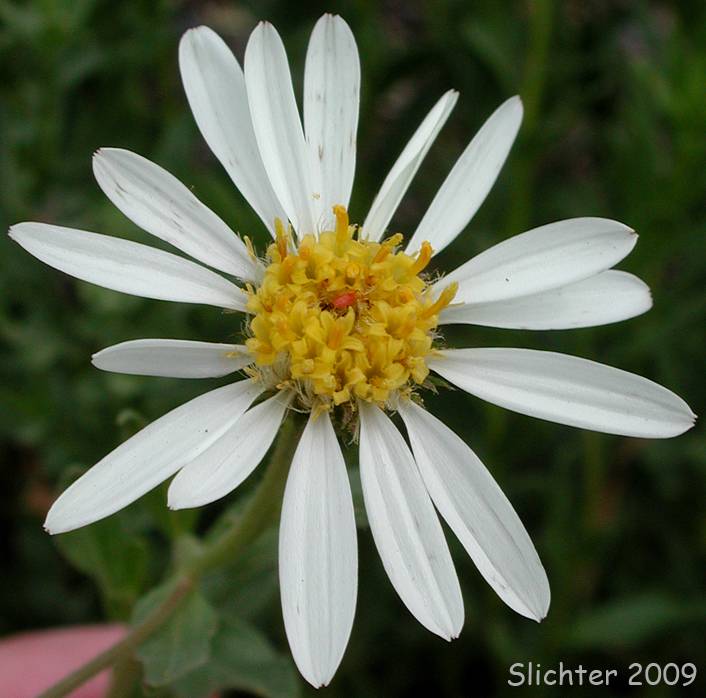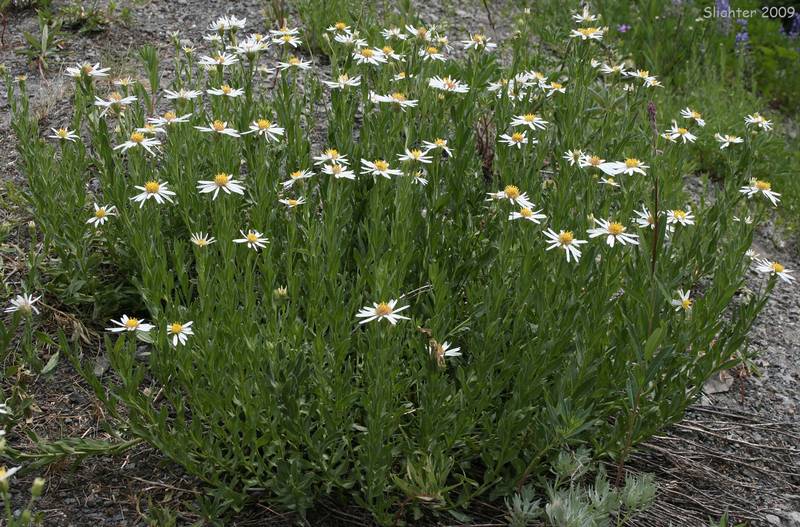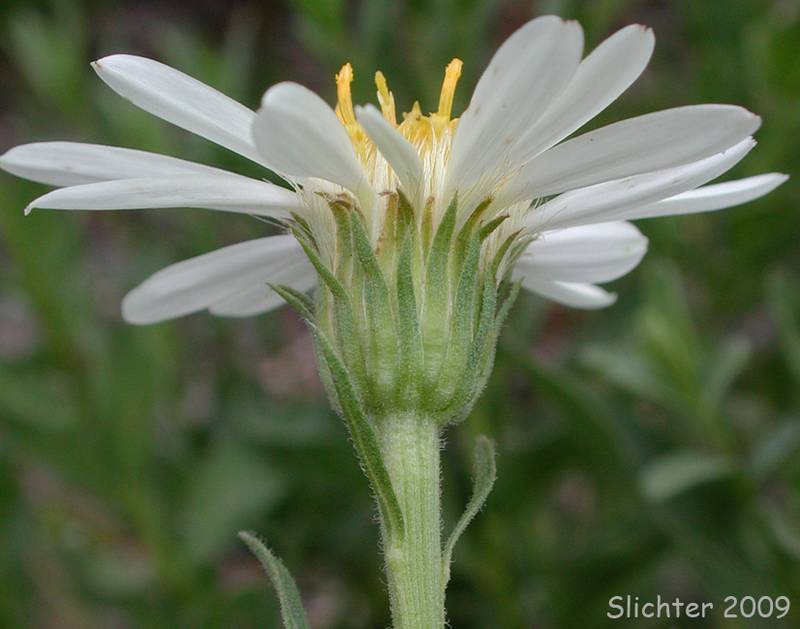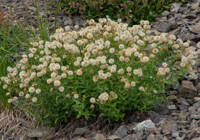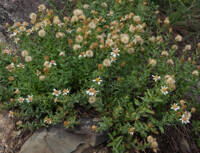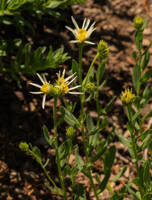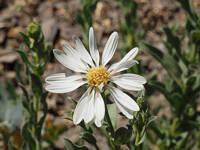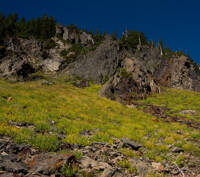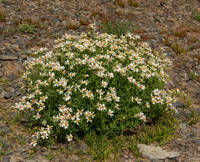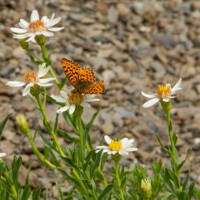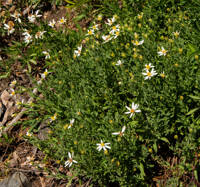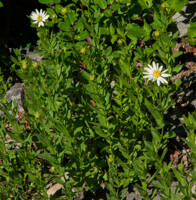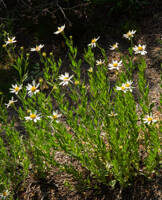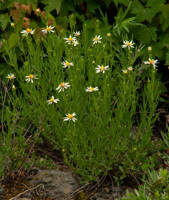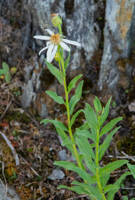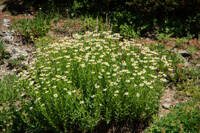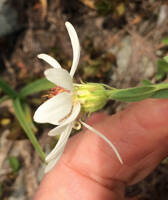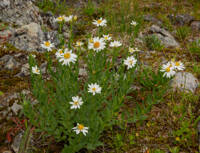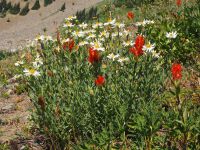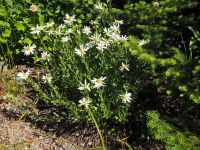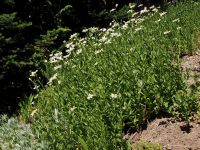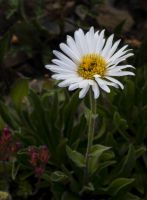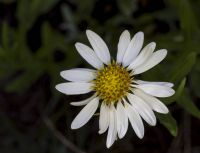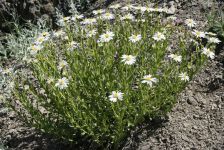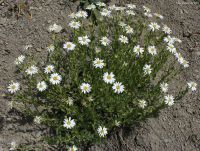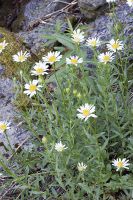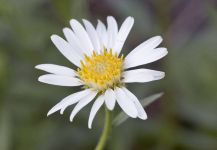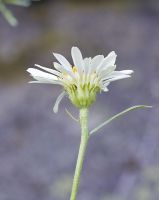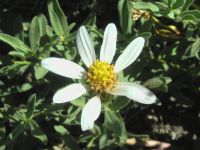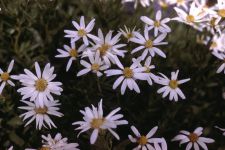Distribution: Occurring in the Olympic Mountains in Washington; Vancouver Island, British Columbia to the Olympic Mountains in Washington.
Habitat: Open slopes, from middle to high elevations in the mountains.
Flowers: July-September
Origin: Native
Growth Duration: Perennial
Conservation Status: Not of concern
Pollination: Bees, flies, butterflies
Perennial from a stout, short woody base, usually with several stems from the base, 2-5 dm. tall, the herbage covered with glands on short, fine hairs.
Lowermost leaves reduced and scale-like, the others numerous, nearly alike, sessile, elliptic or lance-elliptic to elliptic-oblong, entire, 2-4 cm. long and 4-13 mm. wide.
Heads few or solitary, rather large, the disk 1-2.5 cm. wide; involucre 7-10 mm. high, the bracts not much inbricate, narrow, long-pointed, firm and somewhat keeled; rays usually 13, white, 1-1.5 cm. long; pappus of capillary bristles, some of the outer ones shorter.
Achenes hairy throughout.
Publication: Pittonia. 3: 56. 1896.
PNW Herbaria: Specimen records of Eucephalus paucicapitatus in the Consortium of Pacific Northwest Herbaria database
WA Flora Checklist: Eucephalus paucicapitatus checklist entry
OregonFlora: Eucephalus paucicapitatus information
E-Flora BC: Eucephalus paucicapitatus atlas page
CalPhotos: Eucephalus paucicapitatus photos

